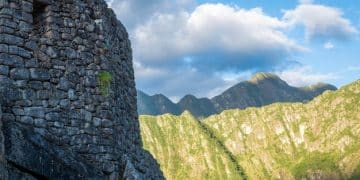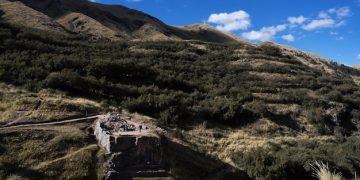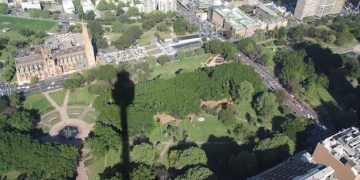Secure Your 2025 Inca Trail Adventure: Book Permits 6 Months Ahead
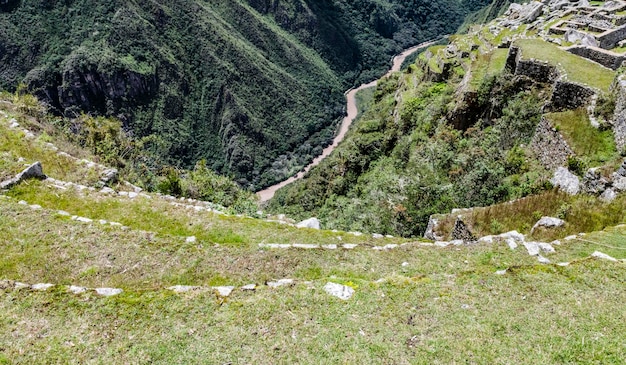
Securing your spot on the Inca Trail for 2025 requires booking permits approximately six months in advance, due to high demand and limited availability; this ensures you don’t miss the opportunity to experience one of the world’s most iconic treks.
Dreaming of hiking the Inca Trail to Machu Picchu in 2025? The key to turning that dream into reality is booking your permits well in advance. Securing your spot on the Inca Trail permits 6 months in advance for 2025 is not just a recommendation; it’s often a necessity to avoid disappointment.
Understanding the Inca Trail Permit System
The Inca Trail is one of the most famous and sought-after treks in the world. To protect the trail and the historical sites along the way, the Peruvian government has implemented a strict permit system. Understanding how this system works is the first step to ensuring you don’t miss out on your chance to hike this incredible route.
Let’s delve into the intricacies of the permit system to gain a clear understanding of its importance and how to navigate it effectively.
Why Are Permits Necessary?
Permits are essential for several reasons. They help to regulate the number of people on the trail at any given time, which minimizes the environmental impact and preserves the archaeological sites. Additionally, permits ensure that only authorized tour operators and guides are leading treks, maintaining a standard of safety and quality.
Who Needs a Permit?
Everyone who intends to hike the Classic Inca Trail (the 4-day/3-night route) needs a permit. This includes hikers, guides, porters, and cooks. Only authorized tour operators can purchase permits, so you’ll need to book your trek through a licensed company.
- Limited Availability: Only 500 permits are issued per day, and about half of these are allocated to guides and porters, leaving approximately 250 permits for tourists.
- Strict Regulations: The permits are non-transferable and are tied to your passport information.
- Conservation Efforts: The permit system helps protect the Inca Trail’s fragile ecosystem and cultural heritage.
Understanding these aspects of the permit system is crucial for planning your Inca Trail adventure. Without a permit, you simply cannot hike the classic route.
The 6-Month Rule: Why It’s Critical for 2025
Now that you know about the permit system, let’s discuss the 6-month rule. Securing your Inca Trail permits 6 months in advance for 2025 is a strategy that significantly increases your chances of getting the dates you want. Here’s why:
Booking early isn’t just a suggestion; it’s a critical step in planning your Inca Trail experience, especially for the popular trekking seasons.
High Demand and Limited Spaces
The Inca Trail is incredibly popular, attracting hikers from all over the globe. Due to the limited number of permits available, competition for spaces can be fierce. Booking six months in advance puts you ahead of the curve and gives you a better shot at securing your desired dates. Weekends and holidays are particularly competitive, so planning ahead is even more essential.

Peak Season Considerations
The peak season for hiking the Inca Trail is typically from May to September, coinciding with the dry season in the Andes. During these months, the weather is more predictable, making for a more enjoyable trekking experience. However, this is also when permits are in highest demand. If you’re planning to hike during peak season, booking six months in advance is essential to avoid disappointment.
The dry season offers the best weather conditions for trekking, but it also means greater competition for permits. Plan to book early to secure your preferred dates.
Planning ahead is really important, especially in the dry season, when things get extra busy!
Booking your Inca Trail permits six months in advance for 2025 isn’t just smart planning; it’s often the only way to guarantee you’ll be able to experience this iconic trail.
Step-by-Step Guide to Booking Your Inca Trail Permit
Booking your Inca Trail permit requires careful planning and attention to detail. Here’s a step-by-step guide to help you navigate the process and secure your spot on the trail:
Follow these steps to ensure a smooth and successful booking process for your Inca Trail permits.
Step 1: Choose Your Dates and Tour Operator
Before you start the booking process, decide on your preferred dates for the trek. Be flexible if possible, as your first choice may not be available. Research and select an authorized tour operator. Make sure they are reputable and have experience organizing Inca Trail treks. Check reviews and ask for recommendations.
Step 2: Provide Your Information
Once you’ve chosen your tour operator, they will need your passport information to book the permits. Provide accurate details, including your full name, passport number, date of birth, and nationality. Any discrepancies between your passport and permit information could prevent you from entering the trail.
Step 3: Submit Your Deposit
Most tour operators require a deposit to secure your booking and purchase the permits. The deposit amount can vary, so check with your chosen operator. Be prepared to pay the deposit promptly to ensure your permits are secured.
- Check Operator Reputation: Research reviews and ask for recommendations to ensure a trustworthy operator.
- Provide Accurate Information: Double-check all passport details to avoid issues with your permit.
- Pay Deposit Promptly: Secure your booking and permits by paying the deposit as soon as possible.
By following these steps and working closely with your tour operator, you can increase your chances of securing your Inca Trail permit and embarking on your dream adventure.
Choosing the Right Tour Operator
Selecting the right tour operator is a critical part of planning your Inca Trail trek. A good tour operator can make the difference between an unforgettable experience and a disappointing one. Here’s what to look for when making your choice:
Choosing a reputable and experienced tour operator is essential for a smooth and enjoyable Inca Trail experience.
Licensing and Accreditation
Ensure that the tour operator is licensed and accredited by the appropriate Peruvian authorities. This accreditation confirms that the operator meets certain standards of safety, quality, and environmental responsibility.
Experience and Reputation
Look for a tour operator with extensive experience organizing Inca Trail treks. Check online reviews and testimonials to get an idea of their reputation and customer satisfaction. A reputable operator will have a track record of successful treks and satisfied clients.
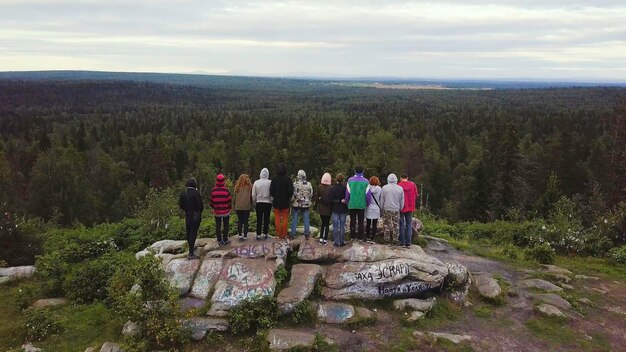
Sustainability Practices
Choose a tour operator that is committed to sustainable tourism practices. This includes responsible waste management, support for local communities, and respect for the environment and cultural heritage of the Inca Trail. Sustainable operators help ensure that the trail remains pristine for future generations.
A commitment to sustainability protects the environment and supports local communities along the Inca Trail.
When choosing a tour operator, prioritize licensing, experience, reputation, and sustainability practices to ensure a safe, enjoyable, and responsible Inca Trail adventure.
Alternative Treks if the Inca Trail is Booked
If you find that Inca Trail permits are sold out for your desired dates, don’t despair! There are several alternative treks that offer stunning scenery and a similar cultural experience. Here are a few options to consider:
Discover alternative treks that offer similar experiences but with potentially greater permit availability.
Salkantay Trek
The Salkantay Trek is a popular alternative to the Inca Trail, offering breathtaking mountain scenery and a diverse range of landscapes. This trek takes you through high-altitude passes, cloud forests, and lush valleys, culminating in a visit to Machu Picchu.
Lares Trek
The Lares Trek is a less strenuous alternative that takes you through traditional Andean villages and offers a unique glimpse into the local culture. This trek features stunning views of the surrounding mountains and valleys and provides an opportunity to interact with indigenous communities.
Inca Jungle Trek
The Inca Jungle Trek combines hiking with other activities like mountain biking and rafting. This adventurous trek takes you through diverse landscapes, from high-altitude passes to subtropical jungles, eventually leading to Machu Picchu.
- Salkantay Trek: Offers stunning mountain scenery and a challenging high-altitude experience.
- Lares Trek: Provides a glimpse into traditional Andean culture and a less strenuous hiking option.
- Inca Jungle Trek: Combines hiking with other adventure activities for a more diverse experience.
These alternative treks offer fantastic opportunities to experience the beauty of the Andes and the magic of Machu Picchu, even if Inca Trail permits are unavailable.
Tips for a Successful Inca Trail Trek
Once you’ve secured your Inca Trail permit, there are several things you can do to prepare for a successful and enjoyable trek. Here are some essential tips to keep in mind:
Proper preparation can significantly enhance your Inca Trail experience, ensuring a safe and memorable adventure.
Physical Preparation
The Inca Trail is a challenging trek that requires a good level of physical fitness. Start training several months in advance by engaging in activities like hiking, running, and strength training. Focus on building your endurance and strengthening your leg muscles.
Acclimatization
Altitude sickness can be a serious issue on the Inca Trail, so it’s essential to acclimatize properly. Spend a few days in Cusco or another high-altitude city before starting the trek. Drink plenty of water, avoid alcohol and heavy meals, and take it easy on your first day at altitude.
Packing Essentials
Pack light but smart for your Inca Trail trek. Essential items include comfortable hiking boots, layers of clothing, rain gear, sunscreen, a hat, insect repellent, and a headlamp. Your tour operator will provide a detailed packing list, so be sure to follow it closely.
Proper acclimatization and smart packing can help minimize potential health issues and maximize your comfort on the trek.
By following these tips and preparing thoroughly, you can ensure a safe, enjoyable, and unforgettable Inca Trail experience.
| Key Point | Brief Description |
|---|---|
| 📅 Book 6 Months Ahead | Secure Inca Trail permits early due to high demand. |
| ⛰️ Consider Alternatives | Explore Salkantay, Lares, or Inca Jungle treks if permits are unavailable. |
| 💪 Physical Prep | Train with hiking, running, and strength exercises. |
| 🎒 Pack Smart | Bring hiking boots, layers, rain gear, sunscreen, and essentials. |
Frequently Asked Questions (FAQ)
▼
It’s recommended to book Inca Trail permits at least six months in advance, especially if you plan to trek during the peak season (May to September). This increases your chances of securing your preferred dates.
▼
If the Inca Trail permits are sold out, consider alternative treks like the Salkantay Trek, Lares Trek, or Inca Jungle Trek. These offer similar experiences with potentially greater permit availability.
▼
No, you cannot hike the classic Inca Trail without a licensed tour operator. Permits are only issued to authorized operators, ensuring that treks meet safety and environmental standards.
▼
The best time of year to hike the Inca Trail is during the dry season, from May to September. The weather is more predictable, and there is less chance of rain, making for a more enjoyable trek.
▼
Essential items include comfortable hiking boots, layers of clothing, rain gear, sunscreen, a hat, insect repellent, and a headlamp. Your tour operator will provide a detailed packing list to help you prepare.
Conclusion
Securing your spot on the Inca Trail for 2025 requires careful planning and early booking. By understanding the permit system, booking six months in advance, choosing the right tour operator, and preparing thoroughly, you can increase your chances of experiencing this incredible trek. If permits are unavailable, consider exploring alternative treks that offer stunning scenery and a similar cultural experience. With preparation and flexibility, your Inca Trail adventure can become a reality.
